Physical Address
304 North Cardinal St.
Dorchester Center, MA 02124
Physical Address
304 North Cardinal St.
Dorchester Center, MA 02124
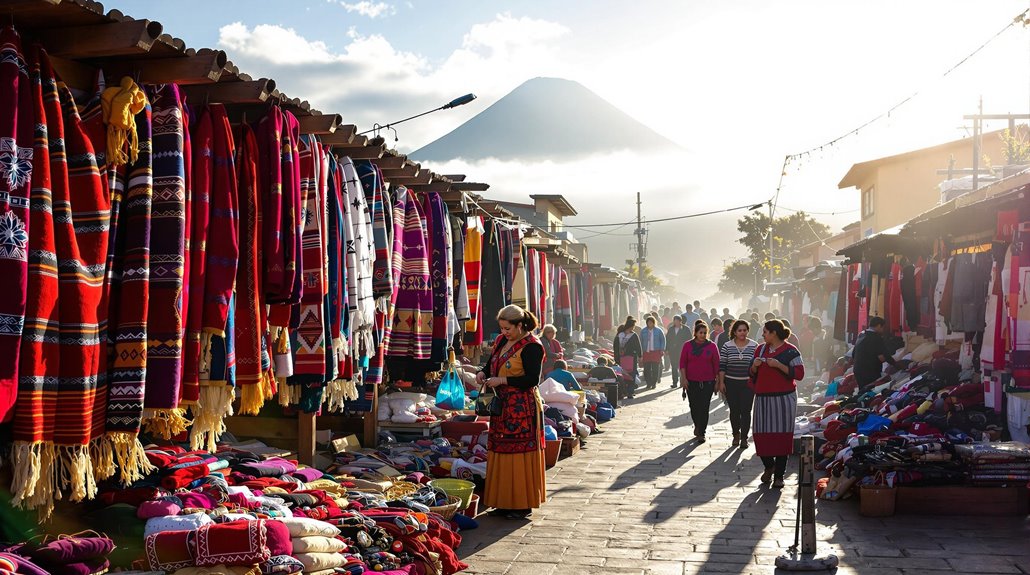
Immerse yourself in Otavalo's enchanting culture, from ancient markets to sacred waterfalls nestled in Ecuador's northern highlands.
When you're planning a trip to Ecuador, you will discover Otavalo on your must-visit list. This highland town, just two hours north of Quito, offers much more than its famous indigenous market. From sacred waterfalls to volcanic crater lakes, and traditional weaving workshops to bird sanctuaries, you will encounter experiences that fit any budget and interest. Let's explore nine authentic activities that showcase why Otavalo remains one of Ecuador's most compelling destinations.
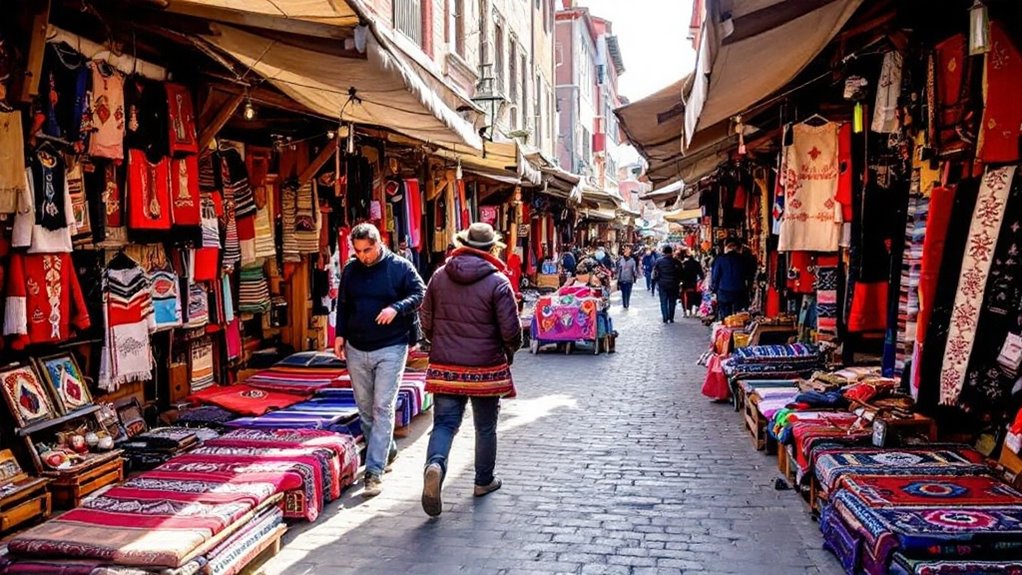
One of South America's most lively shopping destinations, the Plaza De Ponchos Market in Otavalo showcases Ecuador's rich indigenous culture through its vast array of handmade goods.
You'll find incredible deals on traditional textiles, with alpaca ponchos ($15-35), wool sweaters ($17-35), and handwoven blankets ($10-50). Visit between 7-9 AM to avoid crowds, especially on bustling Saturdays. This famous marketplace has a rich history dating back pre-Incan to the fifteenth century.
Don't miss the fresh produce section, where you can score amazing bargains like 24 bananas for $1.
Remember to bargain respectfully, as initial prices are often marked up 30-70%. Bring cash in USD, and try simple Spanish phrases like "¿Me hace un mejor precio?" for better deals.
Watch your belongings in crowded areas and consider combining your visit with nearby attractions like Peguche Waterfall, just 15 minutes away.
Nestled within Ecuador's northern highlands, the Cuicocha Crater Lake offers an unforgettable 14-kilometer circuit hike that showcases pristine volcanic landscapes and panoramic vistas.
Set out on a remarkable journey around Cuicocha Crater Lake, where volcanic wonders and sweeping mountain views await adventurous hikers.
You'll circle a stunning alkaline lake formed by volcanic activity, with two distinctive islets – Teodoro Wolf and Yerovi – dotting its waters, while Cotacachi Volcano dominates the northern skyline. The pristine lake was created during a massive volcanic eruption 3,100 years ago.
Before tackling this 3-6 hour trek, remember these essentials:
Sign in at the park gate (it's free!) and don't forget your camera.
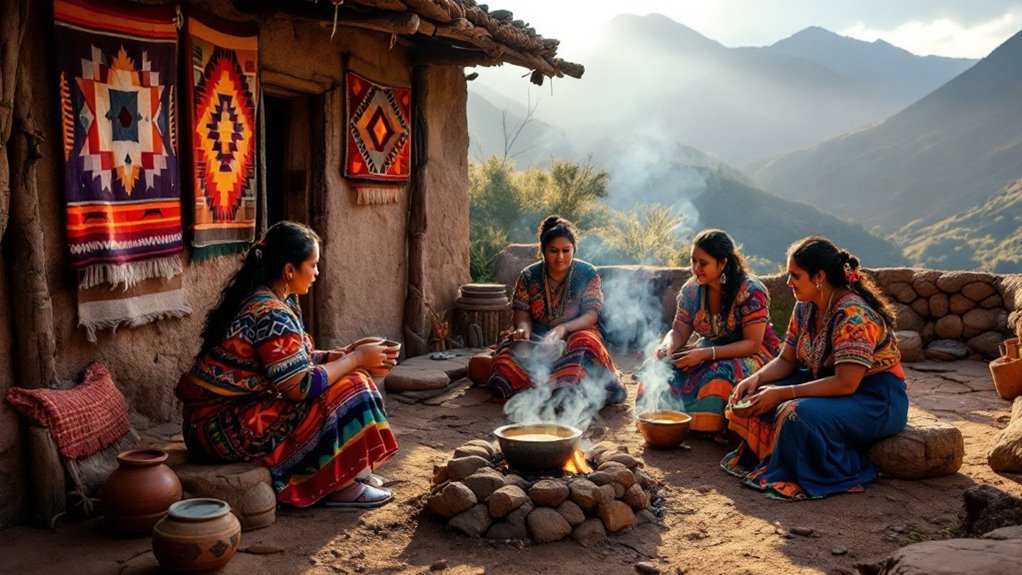
In the heart of Ecuador's highlands, San Clemente offers an authentic immersion into Quichua indigenous life through its community-based ecotourism project.
Located 4 hours from Quito, this village welcomes you to experience traditional customs firsthand through homestays with local families.
You'll participate in daily activities like farming quinoa and corn, learn backstrap weaving techniques, and join in spiritual ceremonies including the Inti Raymi sun festival. Through the Minga principle, community members come together to prepare feasts featuring local produce and traditional dishes for visitors.
The community shares their deep connection to Pachamama through guided tours of sacred sites and astronomical knowledge.
Don't miss the evening music performances featuring charango and bombo drums, or the chance to try local dishes like potato soup and chicha de jora.
The village's commitment to sustainable practices and cultural preservation makes this an enriching, budget-friendly cultural experience.
Just 3 kilometers from Otavalo's center, the sacred Peguche Waterfall stands as a powerful 18-meter cascade within a protected forest sanctuary.
This ancient site, once revered by the Carangues civilization as Angapaccha, remains a spiritual hub where indigenous healers perform traditional cleansing rituals, especially during June's Inti Raymi festival. The locals believe that these powerful waters provide strength against evil spirits.
You can easily reach the falls by:
The main trail takes only 15-20 minutes to reach the waterfall's base, with upper paths leading to scenic viewpoints and caves.
Visit early morning to avoid crowds, wear sturdy shoes for the misty conditions, and consider leaving a small donation ($1-2) at the entrance to support site maintenance.

Perched at 2,800 meters on Pucará hill, Parque Condor offers an unforgettable encounter with Ecuador's majestic birds of prey. This conservation center houses 70 rescued raptors, including the endangered Andean Condor, Ecuador's national symbol. The facility was established in 2007 by Joep Hendriks, a Dutch conservationist dedicated to protecting Ecuador's birds.
You will discover to time your visit around the daily flight demonstrations at 11:30 or 15:30, where you can watch eagles, hawks, and owls soar against a backdrop of Imbabura and Cotacachi volcanoes. The 45-minute shows include educational commentary and interactive segments for children.
Getting here is easy – it's just a 5-minute drive from Otavalo via Calle Piedrahita, costing about $4 by taxi.
The park's open Wednesday through Sunday, 9:30-17:00. Entry is $6 for adults and $3 for children aged 3-11. You'll discover a cafeteria and souvenir shop on-site.
While mass-produced textiles flood Otavalo's markets, the authentic heart of indigenous weaving beats strongest in the city's traditional workshops.
Miguel radiates warmth and mastery as he welcomes visitors to experience his ancestral craft firsthand. You'll discover genuine craftsmanship at Miguel Andrango's Tahuantinsuyo Workshop, where fifth-generation artisans demonstrate pre-Inca techniques using locally sourced alpaca and sheep wool.
For the most enriching experience, visit workshops that offer:
Head to Antigua Fabrica San Pedro to purchase directly from artisans while supporting cultural preservation.
Though synthetic fibers have entered modern production, traditional workshops like Tahuantinsuyo protect sacred designs by avoiding mass market sales, ensuring you're getting authentic, high-quality textiles worth your investment.
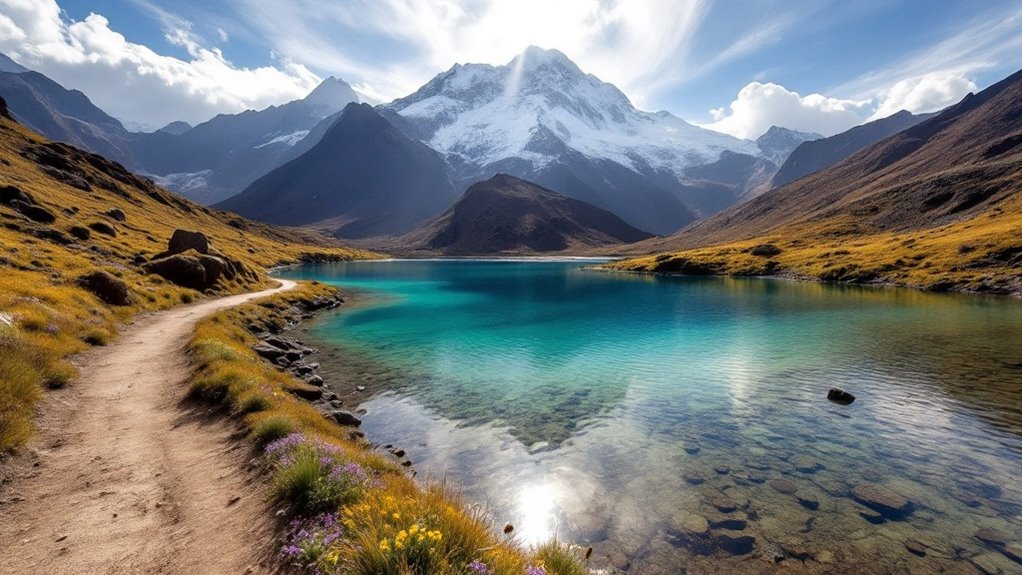
Beyond Otavalo's cultural treasures lies a natural wonderland at the Mojanda Lakes, where three pristine volcanic crater lakes sit majestically at nearly 14,000 feet in the Andes Highlands.
You'll need to hire a taxi or join a guided tour from Otavalo, as there's no public transportation to the lakes. The 35-minute drive costs around $20 round trip – just remember to arrange your return pickup in advance.
Once there, you can tackle the 4-hour hiking circuit around the lakes, or challenge yourself with the Fuya-Fuya volcano summit trek.
Pack warm layers and acclimatize properly – temperatures hover near freezing, and the high altitude requires preparation.
There's a small snack shop at Caricocha Lake, but you'll want to bring your own supplies for this remote adventure.
Rising 2,847 meters above sea level, El Lechero Viewpoint offers some of the region's most spectacular panoramas, including unobstructed views of Imbabura Volcano, San Pablo Lake, and the towering Cotacachi peaks. Many visitors find that early morning visits provide the most serene experience with minimal crowds.
At the summit, you'll discover the sacred Sapium glandulosum tree, a 1,000-year-old sentinel that's central to indigenous mythology and ceremonies.
To make the most of your visit:
The moderately steep terrain requires sturdy shoes, but the panoramic vistas and cultural significance make this trek worthwhile.
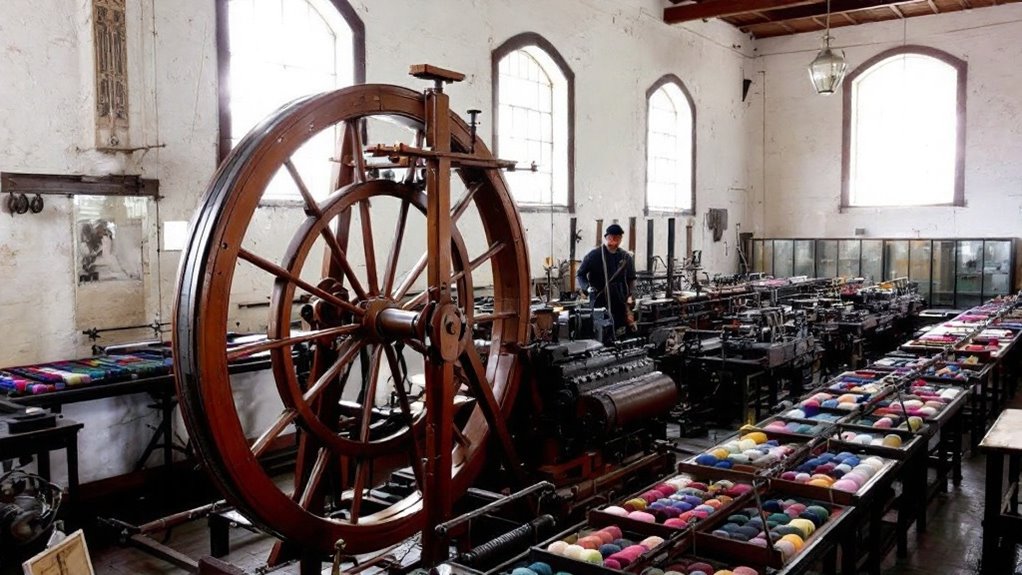
After taking in Otavalo's natural beauty, you'll want to explore its rich textile heritage at Museo Fabrica Imbabura. This restored textile factory, just a 15-minute taxi ride from Otavalo in Atuntaqui, offers free admission and opens Tuesday through Sunday from 9:00 to 16:00.
The building was established by Spanish brothers Dalmau who arrived in Ecuador in 1910 with ambitious plans for the region's textile industry. You can take a self-guided tour or join a bilingual guide to learn about Ecuador's first cotton textile facility. The museum showcases original machinery, historical photographs, and interactive demonstrations of cotton processing.
Don't miss the restored hydroelectric power station and exhibits on indigenous Otavaleño weaving traditions. Remember to bring your camera – you're welcome to photograph the vintage looms and textile artifacts.
The museum's neoclassical architecture, combined with industrial design elements, provides excellent photo opportunities throughout your visit.
Whether you're exploring the colorful Plaza De Ponchos Market, hiking around Cuicocha Crater Lake, or learning traditional weaving techniques, Otavalo packs incredible value into every experience. You'll discover most attractions are either free or budget-friendly, with local buses making transportation affordable. Don't forget to carry cash for market purchases, wear comfortable hiking shoes, and start your days early to make the most of your time.